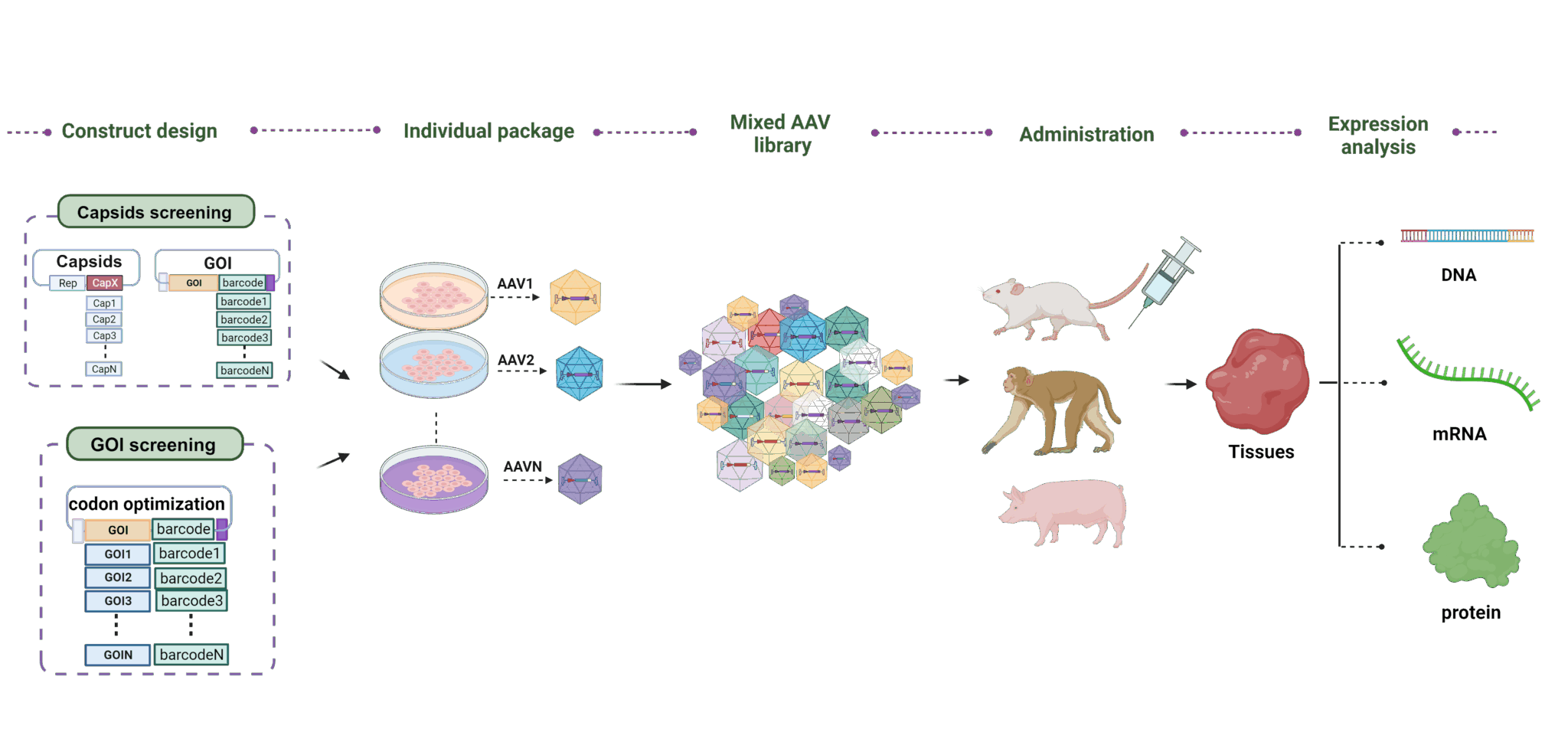- Capsid Barcoded AAV Production
Generation and screening of AAV libraries have emerged as a powerful method for identifying novel capsids for gene therapy applications. For the majority of libraries, vast population diversity requires multiplexed production, in which a library of ITR-containing plasmid variants is transfected together into cells to generate the viral library. This process has the potential issues of cross-packaging and mosaicism, in which particles are comprised of genomes and capsid monomers derived from different library members.
Capsid Barcoded AAV is designed to evaluate different commonly used AAV serotypes or variants’s activities in different cells and tissues in one single experiment. In the Capsid Barcoded AAV, Common CB-EGFP is used as reporter system. Each AAV capsid is assigned to each barcodes (BCs), which are located between EGFP and PolyA sequence. Researchers could check both DNA and RNA levels with NGS targeting to BCs region.
Through the comparative analysis of DNA or RNA levels associated with these barcodes, researchers can ascertain the AAV capsid variant that demonstrates the highest efficiency tailored to their particular application. Capsid barcoded AAV could be used for second or third round selection of AAV library,.
Compared to conventional AAV package of AAV library, capsid barcoded AAV could maintain the direct relationship between cap and barcoding sequence to solve the cross-packaging and capsid mosaic problems in multiplexed AAV Libraries. Through the comparative analysis of DNA or RNA levels associated with these barcodes in Parallel AAV platform, researchers can ascertain the AAV capsid variant that demonstrates the highest efficiency tailored to their particular application.

